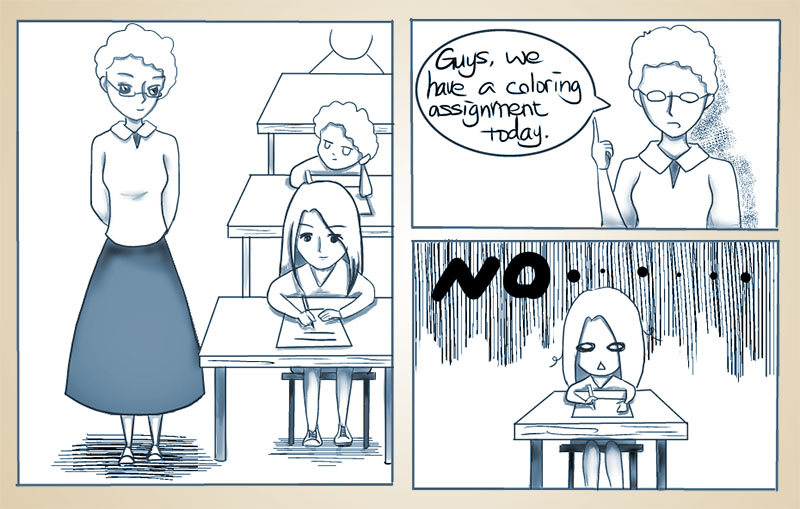

Coloring is one of the first real tasks students are introduced to in school. It teaches them to follow directions and helps them learn to be neat. It is something everyone does as a kid and is a staple of early education. But, while it’s a great skill for 6-year-olds, is it really necessary in high school?
Teachers certainly think so. “School tends to focus on words, and students who are good with words are generally more successful,” says biology teacher Cathryn Kliegel. Kliegel gives artistic assignments to provide a form of visual learning for those who might not be as masterful with the verbal-centric instruction prevalent in most school systems in the United States.
Teacher development coordinator Genevieve Thurtle gives a slight variation of Kliegel’s ideas. “Coloring should be used only as a tool to support the development of ideas,” says Thurtle, who believes that art is only there to help students meet the standards. She emphasizes that a teacher’s main job is to help students master the standards, and that alternate forms of teaching, like art, are meant be helpful, not detrimental.
“Students need to be able to function in a variety of different ways in order to succeed,” says history teacher James Smith. Smith believes that this multi-faceted approach to learning is the key to success and is the main reason why artistic assignments are incorporated into education.
However, some students do not entirely agree, and many do not see the point in coloring. For example, sophomore Vijay Joshi argues, “Students should have a choice in doing these assignments, and they should be able to choose alternatives if they want.” Joshi believes that students should have a say in the way they want to learn and not be bound by a teacher’s lesson plan.
Junior Devon Hughes, another opponent of coloring, adds, “I have more important things to do with my life than color. Coloring is absolutely not learning, and teachers only give it because they have nothing better to assign.”
“They’re just easy points teachers give students,” says freshman Horace He of coloring assignments.
Much of this dislike stems from the fact that many students are not artistically inclined. Dubbed the “artistically challenged,” these students are not very confident in their artistic capabilities and are strongly opposed to art in an academic environment.
However, teachers do take these students into consideration, albeit with different levels of responsibility. On the less liberal side of the spectrum are teachers like Kliegel, who explains, “Students will only get better at these types of assignments if they do them more.”
On the more lenient side however, teachers like Alicia Sánchez judge students based upon their effort. Sánchez, who teaches AP Spanish, considers herself to be artistically challenged. It is surprising then, to see her classroom’s walls plastered with multitudes of colorful art projects done by students.
“There are different types of art, and the important aspect is not the appearance, but rather the meaning behind the assignments,” she explains. For example, she sometimes uses pictures as a tool to facilitate the memorization of vocabulary words, and points out that the importance is on the vocabulary, and not the pictures themselves.
Sánchez’s use of coloring as a tool to facilitate understanding re-iterates Thurtle’s views and emphasizes that teaching should be the focus. However, the fact that coloring can be used as a teaching tool, and not just as mere busy work, escapes some students at Aragon.
History teacher James Smith puts the problem teachers face into simple terms: “Every student is different, so we can’t make everyone go through the same process of learning.” Coloring can be seen as a way to shake-up the process and reach more students. As Smith says, “We can’t keep on trying to fit squares into round holes.”




